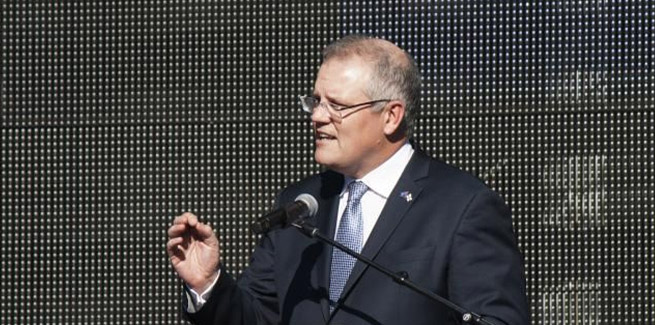In an address to the National Press Club, Prime Minister Scott Morrison has flagged risks associated with a sharp reduction in Australia’s migration intake as a result of travel restrictions imposed to curb the spread of COVID-19.
“It’s one of the concerning economic figures we have,” he said.
Mr Morrison made specific reference to impact of subdued levels of migration on the residential construction sector, adding that the issue has been a “key topic of discussion” between all levels of government.
The government is expecting net overseas migration to fall to approximately 34,000 in 2020-21, well below levels needed to maintain GDP growth – estimated at around 160,000 to 210,000.
“There’s obviously a big gap there,” the Prime Minister added.
“It’s a short-term gap, but it’s going to be one of the real impacts of this crisis because our borders aren’t going to open up any time soon.”
According to Domain economist Trent Wiltshire, subdued population growth, particularly net over search migration, would be one of the main drivers of prolonged weakness in the housing market.
“Lower immigration means reduced demand for property, which will put downward pressure on prices,” he said.
“Lower population growth will be one of a number of factors that will contribute to property price falls in 2020. Other factors are rising unemployment and concerns about job security, expectations of price falls, larger households due to people wanting to save money, some forced sales, and restrictions on transacting real estate.
“Property sales are likely to decline by even more than prices.”
ANZ Research has also touted the impact of subdued migration levels on the property market, particularly in Australia’s largest capital cities.
“This drop in population growth will remove a major driver of economic growth and housing demand, at least for a period,” the research group warned.
“In the year to June 2019, Sydney’s population grew by 87,000, with 85 per cent of those newcomers being overseas migration,” ANZ Research continued.
“In Melbourne, the numbers are also significant, with 77,000 overseas migrants accounting for 68 per cent of the total population growth of 113,000.”
The research group is expecting property prices and construction activity to fall throughout 2020 and into 2021, before a “modest” recovery in the back end of 2021.
An average peak-to-trough decline of 10 per cent has been projected for home values across Australia’s capital cities.
[Related: Weak population growth to increase strain on house prices]
 ;
;